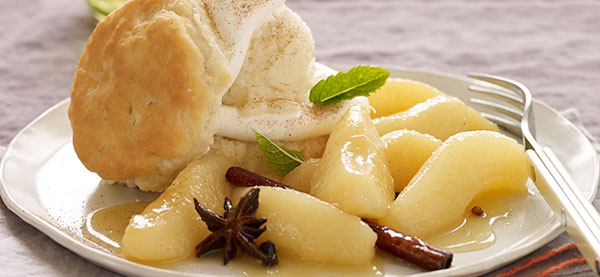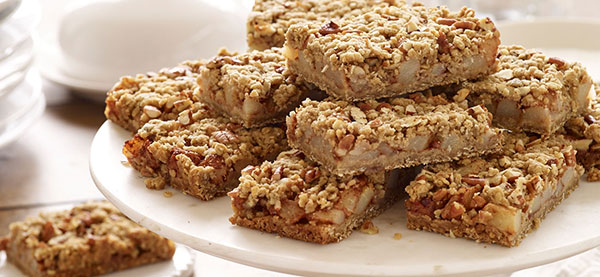
Pairing Pears with Autumn Baking Applications
01 October 2019Canned pears are convenient, cost effective and versatile when searching for fall baking ideas.
By Lisa Parrish, GMC Editor
 The smell of certain baked goods evokes ideas of cooler temperatures and changing seasons. At this time of year, why do apple-pie-scented candles start showing up on store shelves, even in south Florida? Bakers say goodbye to light summer produce and hello to their dusty cinnamon spice container as they ready themselves for the autumn baking season.
The smell of certain baked goods evokes ideas of cooler temperatures and changing seasons. At this time of year, why do apple-pie-scented candles start showing up on store shelves, even in south Florida? Bakers say goodbye to light summer produce and hello to their dusty cinnamon spice container as they ready themselves for the autumn baking season.
Pears are perennially associated with fall, even though fresh and canned pears are available all year. Pears are sweet, juicy and nutritious fruits that can be featured in baked items such as cakes, muffins, gingerbread, and breakfast rolls. Instructors choosing to utilize canned pears can get creative in making sweet applications that use both the pear halves as well as the packing syrup.
Joliet Junior College Pastry and Baking Professor Mark Muszynski enjoys using canned pears in his culinary lessons because of the convenience, cost effectiveness and how well pears pair with many flavors.
“I usually use the (canned pear) syrup for brushing on cakes to keep the layers moist,” he said. But, he also suggested that if the cake has a flavor profile that matches well with pears, “you can puree some of the pears into the syrup for more flavor.”
 Utilizing the canned Bartlett pear and packing syrup is very sustainable and can help chefs avoid adding refined sugar to their applications. A half-cup of canned pears provides a full serving of fruit at less than 100 calories and is fat-free, low-sodium and has no cholesterol. Also, each hand-picked canned pear is ripened to perfection before being peeled, cored and poached right in the can, preserving the fruit’s quality, nutrition and flavor.” (Click here for a video describing the canning process from orchard to can.)
Utilizing the canned Bartlett pear and packing syrup is very sustainable and can help chefs avoid adding refined sugar to their applications. A half-cup of canned pears provides a full serving of fruit at less than 100 calories and is fat-free, low-sodium and has no cholesterol. Also, each hand-picked canned pear is ripened to perfection before being peeled, cored and poached right in the can, preserving the fruit’s quality, nutrition and flavor.” (Click here for a video describing the canning process from orchard to can.)
Susan Renke, Pacific Northwest Canned Pear Service promotion director, said, “Pears are packed most commonly in light syrup. And, sitting in the can in the juice or syrup doesn’t change the nutrition profile. The juice or syrup is used as part of the poaching process which preserves the fruit. Just like some grandparents used to do, and some DIY millennials are trying!”
Another autumn dessert Chef Muszynski suggests is pears with butterscotch ice cream. “I like the flavor of butterscotch ice cream and sautéed pears. I use butter, brown sugar, and vanilla bean to sauté the pears and sometimes add a spice like cinnamon stick or star anise. I serve warm with a quenelle of butterscotch ice cream, some of the sauce from sautéing and some banana bread croutons,” he said. “I also like licorice or star anise to match up with the pear flavor.”
And, speaking of ice cream, the syrup and pears can also be used to create a sorbet. Chefs can use a simple syrup and pureed pear but Muszynski offers using the canned syrup for the sorbet, adjusting the sugar content for proper freezing properties. Also, the pureed pear can add a smoother mouth feel and texture, he said.
According to Renke, many educational foodservice operators in the kindergarten through 12th grade setting, use canned pears instead of applesauce in reduced-fat baking. “Pureed canned pears are used exactly like applesauce in similar applications. The nutritional benefit would be reduced fat from using pears instead of oil and a reduction in sugar since the pears are naturally sweet,” she said.
Click here to read the Gold Medal Classroom’s Meet the Growers story on “How to Prepare a Pear.”
Photos courtesy of Pacific Northwest Canned Pears
